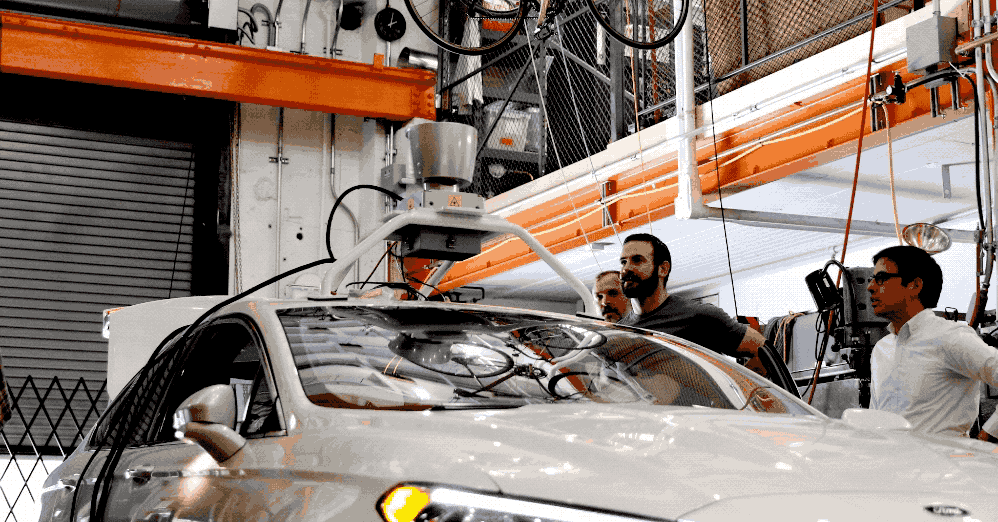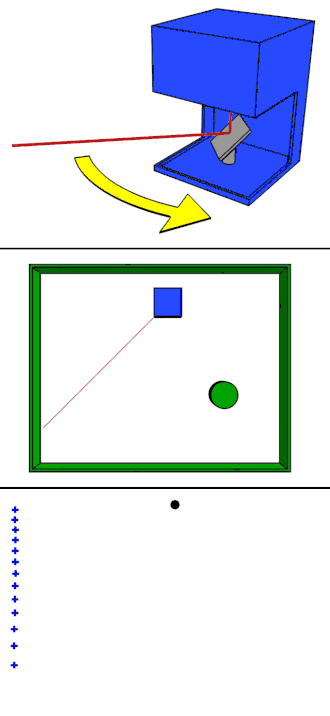Lidar Tech explained in 3 mins!
Hey friends, Happy Wednesday!
I’m including an extended summary of how a gadget works in my newsletter, from which you can understand the essence in less than 3 minutes.
Let’s look at how a Lidar works this week. I aim to write my newsletter issues in a way one can follow them while traveling on a bus, having a coffee, waiting for food, etc. Let's jump in!
Tweet of the week
What is a Lidar?
Figure 1: Lidar on top of an autonomous vehicle (Source: Tech Crunch)
Lidar, which stands for Light Detection and Ranging, is a technology that uses laser beams to measure the distance to objects in the vehicle’s environment. The system emits a laser beam, bouncing off an object and returning to the lidar sensor. By measuring the time it takes for the laser to bounce back, the lidar can calculate the distance to the object accurately.
A lidar determines the distance of an object or a surface with the formula d = c*t/2, where c is the speed of the laser, d is the distance between the detector and the object or surface being detected, and t is the time spent on the laser light to travel to the object or surface being detected, then travel back to the detector.
Like how Radar uses Radio waves, Sonar uses sound waves, a Lidar uses a laser. The spectrum used for lidar is typically in the near-infrared (NIR) range.
By emitting laser beams and receiving them back, lidar sensors can accurately measure distances to objects and create detailed 3D maps of the surrounding environment.
Once the lidar sensor has captured data about the environment, it is processed by the vehicle’s computer system. The computer uses sophisticated algorithms to interpret the data and create a 3D map of the environment. This map is then used to guide the vehicle’s movement and avoid any obstacles in its path.
Some of the applications Autonomous Vehicles: Create a detailed 3D map of the surroundings. Create detailed topographic maps: Measure the height of trees and buildings, and identify changes in the landscape over time. Archaeology: Lidar sensors can be used to create detailed maps of archaeological sites.
How do Lidars work?
There are different types of Lidars, let’s look at the Rotating Lidars.
Figure 2: Rotating Lidars (Source: Wikipedia)
Rotating lidars use a spinning mirror to direct the laser beam toward the environment. As the mirror rotates, the laser beam is reflected off it, scanning the surrounding environment in a circular pattern. The laser doesn’t rotate, but it’s the mirror. The time it takes for the laser to bounce back from an object is measured and used to calculate the distance to that object.
Figure 2 is an animation for 2D Lidar mapping. Notice the rotating mirror (top of the image) deflecting the laser in a circle. The point cloud image (bottom of the image) is the perception of the world by the Lidar.
To create a 2D map of the environment, the lidar sensor typically rotates the mirror continuously as it scans the environment, allowing it to capture distance measurements in a full 360-degree circle. The lidar sensor then combines these distance measurements to create a 2D map of the environment in the horizontal plane.
However, to capture a more detailed and accurate 3D map of the environment, lidar sensors can use multiple laser beams and receive channels to capture distance measurements from different angles simultaneously. By combining these measurements, lidar sensors can create a more complete and detailed 3D map of the environment, which includes both the horizontal and vertical dimensions.
The laser beam is directed toward the environment in a series of quick pulses, typically at a rate of several hundred thousand pulses per second. As the laser beam strikes an object in its path, it reflects back toward the lidar sensor, where it is detected by the receiver.
This is how Lidar works and is used by Autonomous vehicles to perceive the world and create a 3D map.
Blog posts
My blog post S2E7 exploring Cameras and Instant Cameras is coming out next week. I’ll notify you next Wednesday about the same :)
Also, by replying to this email, let me know if you’d like to read about a specific gadget/device. And I can write about it.
Thank you for reading!
Have a nice rest of the week, and take care!
Until next Wednesday,
Chendur


